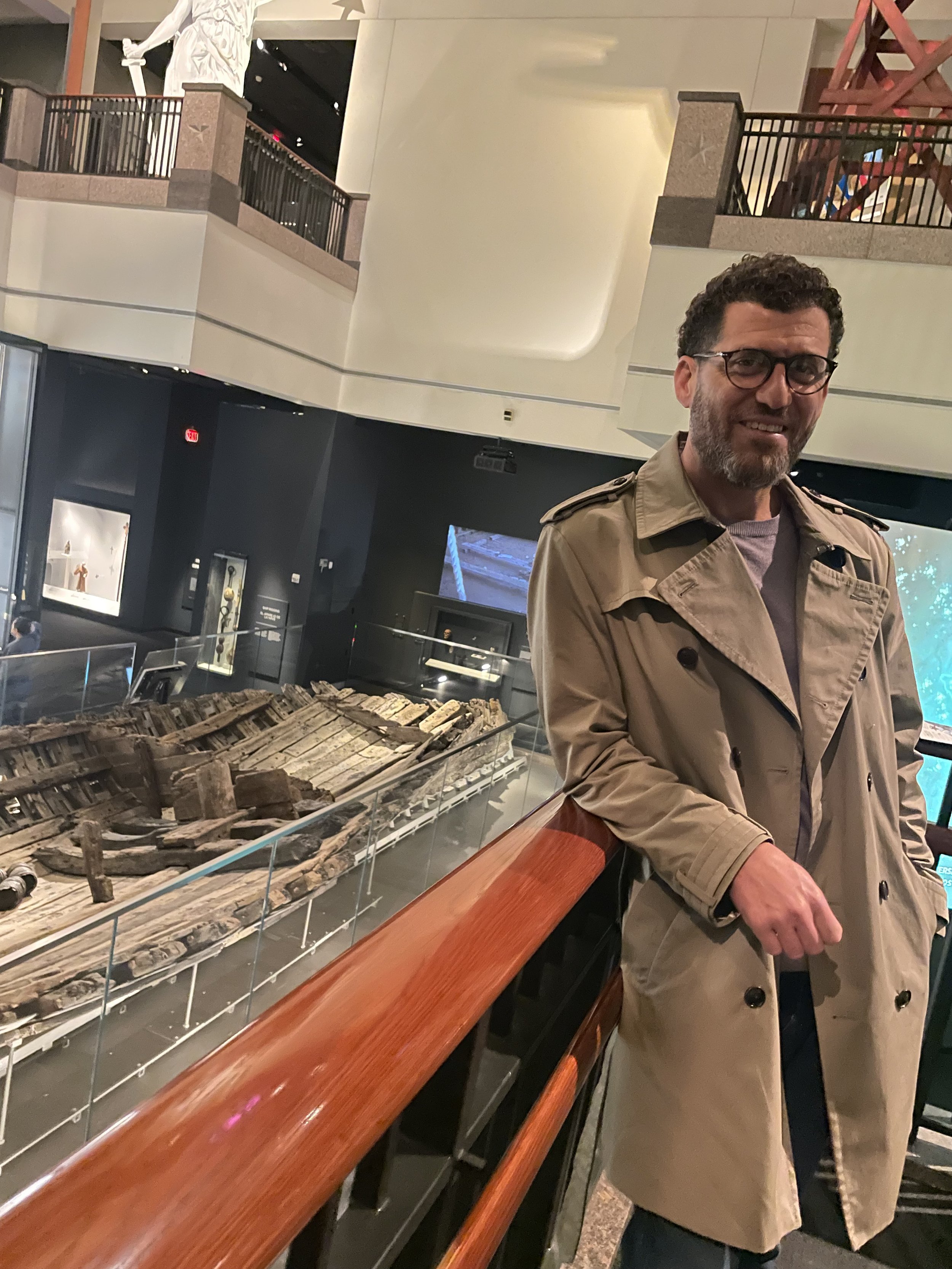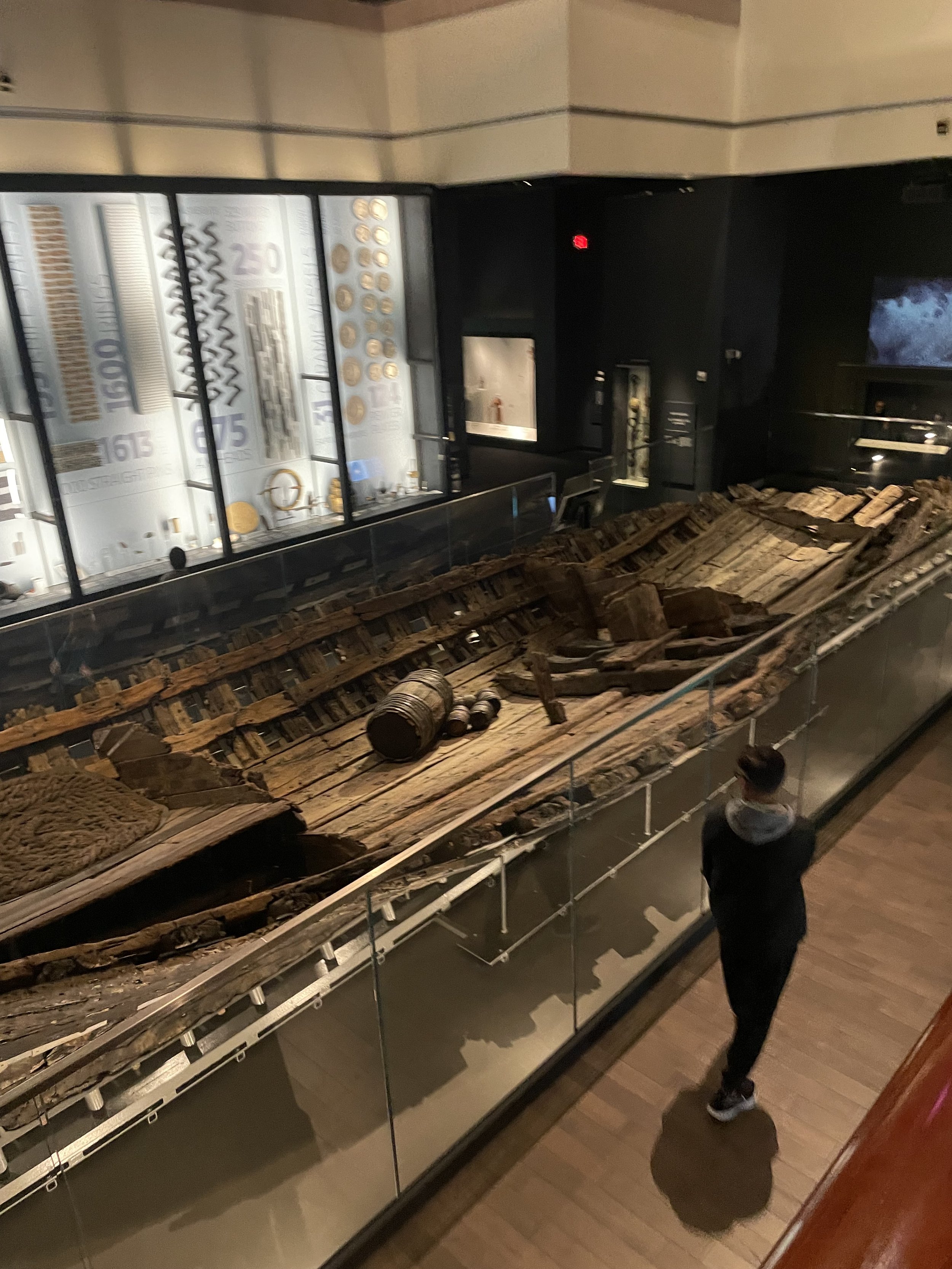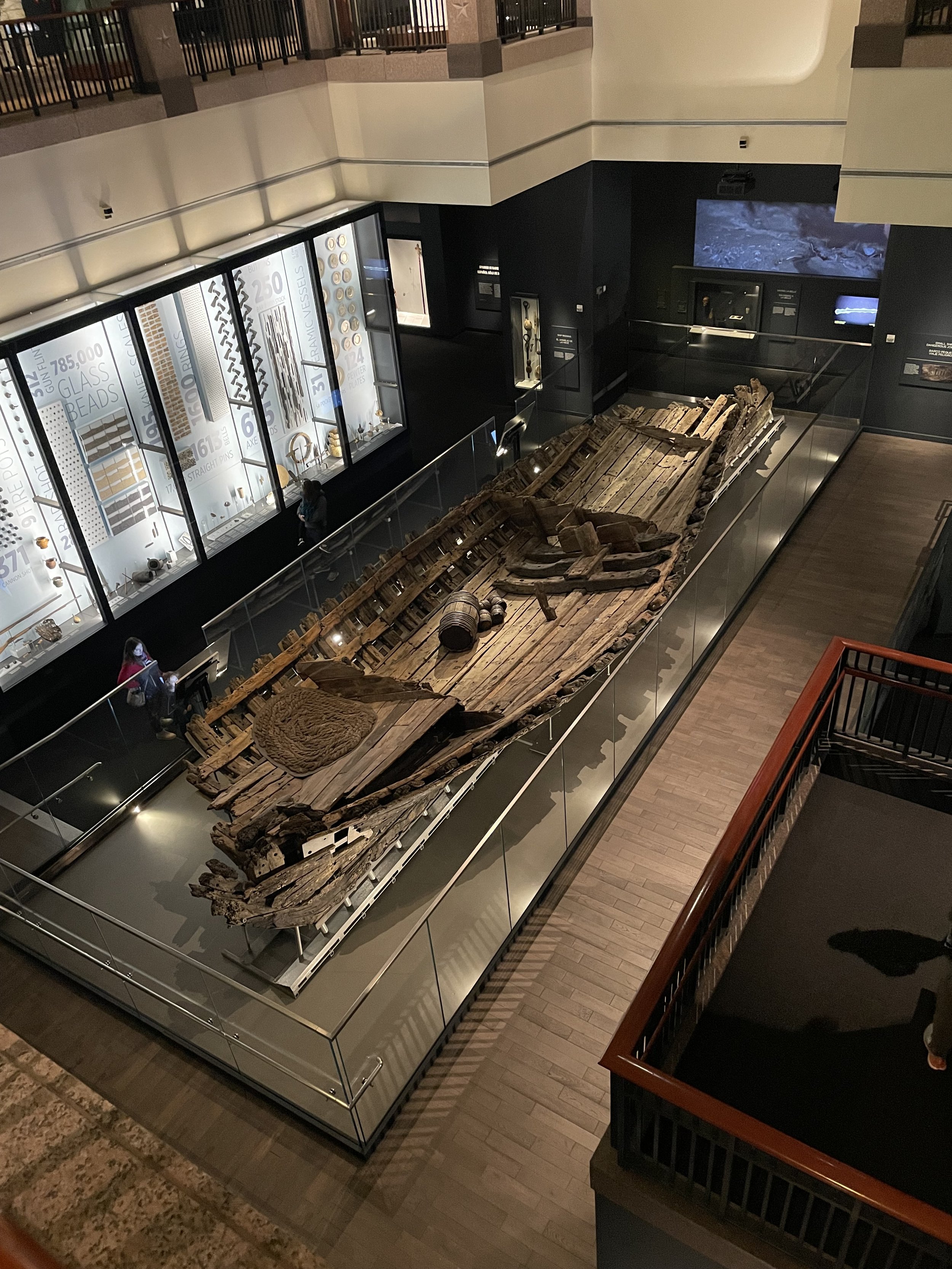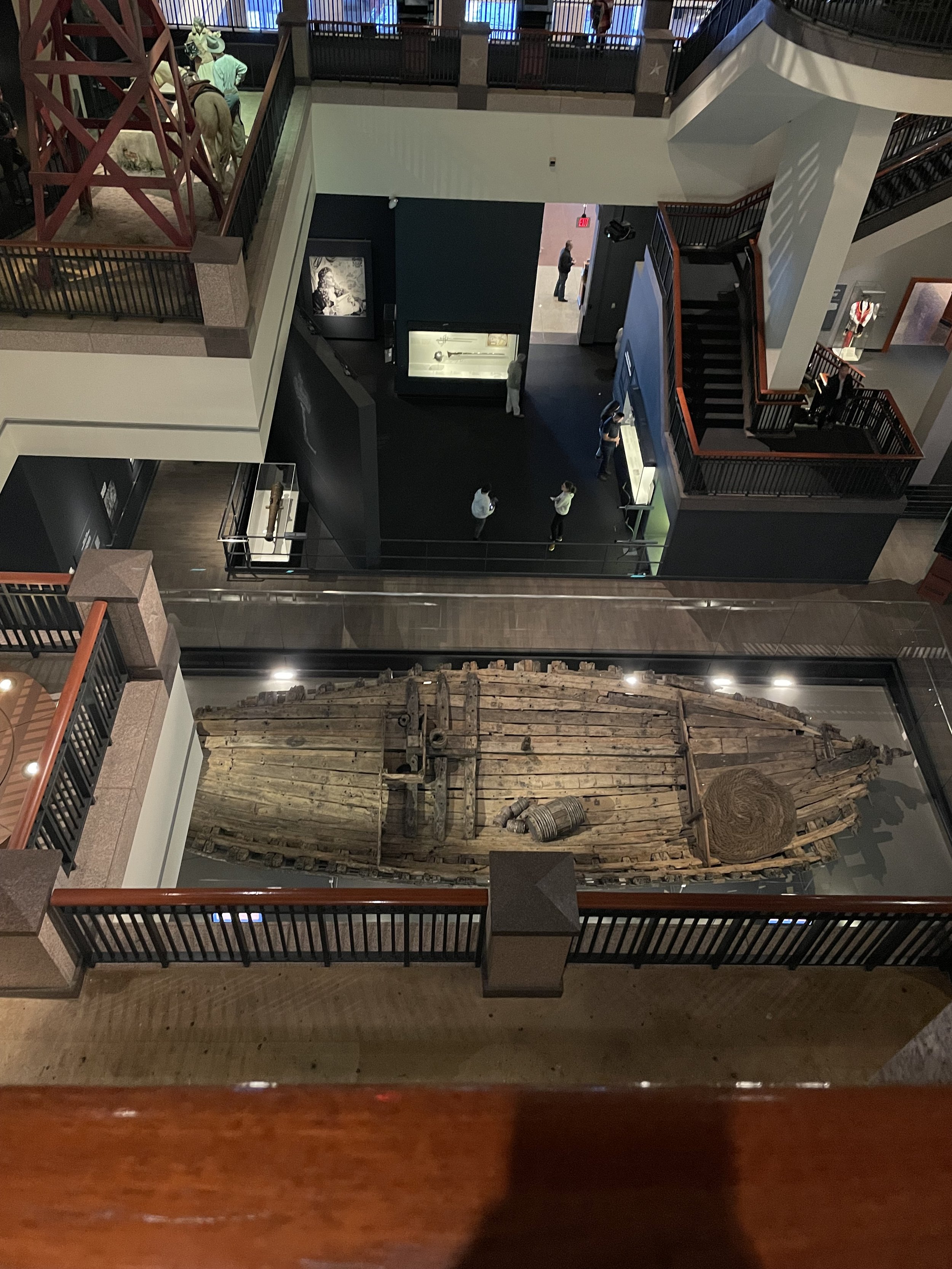The Flaming Barrel of Pierre Duhaut
Of the six flags that flew over Texas, the coat of arms of Louis XIV was one of them (1685–1690). However, the tiny French colony in what’s known as Texas today was the consequence of faulty navigational equipment. This gaffe would result in the murder of the leader of the French colonist that was suppose to steer them to the Mississippi River.
René-Robert Cavelier, Sieur de La Salle was born in Rouen, France in 1643. Drawn by the carnal desires of youth, he abandoned the Jesuit order he was committing himself to. One of those itches was adventure and the potentials that awaited settlers in the New World.
At the age of 23, in 1666, La Salle sets sail for La Nouvelle France (now eastern Canada) and settled on the small island formed by the confluences of the Prairies and Saint Lawrence Rivers that was named Montreal.
Establishing himself in the fur trade La Salle learned the language of the Ojibwa people of that region. The Ojibwa, also known as the Chippewa, described a trade post to La Salle. It was toward the end of a river they called the Mississippi (The Great River), and that people would cross a big body of water to this port to trade.
La Salle’s conclusion was that the big body of water must be the Pacific Ocean. And if that was the case the people crossing the vast body of water had to be Asian. Provoked by speculations of wealth from establishing trade with China, he set off with some other Frenchmen, Italian explorer Henri de Tonti, and some Native American guides.
When he got to the mouth of the river on April 9, 1682 he quickly realized that the body of water wasn’t the Pacific, but the Gulf of Mexico. Regardless, he saw the potentials of International trade with France’s fledging colony’s in the south, and its potentials for dominating North America.
In the desolate muddy delta of the river, La Salle gathered three pieces of drift wood. In ceremonial fervor, he designed a Catholic cross with two pieces of the drift wood. The third piece would be planted in the mud next to the makeshift cross. La Salle took a raggedy piece of copper and painted the coat of arms of the Sun King, Louis XIV on it (Louis XIV was the king in France in 1682).
La Salle nailed the coat of arms to the third piece of driftwood, and proceeded to claim the entirety of the Mississippi River valley for France. Three pieces of driftwood, a rusty piece of copper from a tea kettle, and some makeshift paint…and just like that he claimed peoples land as though no one was living here.
An artistic interpretation of claiming Louisiana for France.
Spawned by a misconceived superiority that gave him the privilege to claim land that the Natives had inhabited for thousands of years. Aided by God’s true religion, and given the burden of propagating a gospel of European enculturation. When the colonist sang Vexilla regis the heavens shuttered in terror. Uttered verses of Te Deum tainted that which was holy with elegies of sulfur.
They fired three shots from their muskets. The first shot plunged a corrosive hole of decay into the geosphere. The second shot wounded the clouds, causing them to precipitate droplets of blood. The third morphed the delta into a sty of trade for sugar, cotton, and human flesh.
After offering praise to God and Country, La Salle preceded to name this annex to New France, La Louisiane (That which regards Louis) in honor of King Louis XIV.
Almost entirely surrounding New England, New France now spanned from Eastern Canada to the Gulf of Mexico. La Salle’s vision was to build forts down the river to prevent New England from expanding west, and in time, to push the British out.
La Salle wasn’t commissioned to claim this land, so he sailed back to France to get permission from Louis XIV and ask for resources to this end. The Sun King wasn’t initially convinced, but he relented. La Salle wanted to bring ships in pieces to be constructed in New France so they could sail down the river again.
Instead Louis XIV gave him instructions to go back up the river to save resources. This move would prove to be fatal. On August 1, 1684, La Salle embarked on his journey back to the Mississippi River Delta to establish a French settlement. He departed Rochefort, France with 4 ships and more than 300 settlers.
La Salle's Expedition to Louisiana in 1684, painted in 1844 by Theodore Gudin. La Belle is on the left, Le Joly is in the middle, and L'Aimable is grounded in the distance, right.
From the start the expedition was plagued by misfortune, including dissension among the leaders and loss of the ketch Saint François to Spanish pirates off the coast of St. Domingue (now Haiti). The lost of this supply boat alone initiated disaster.
Furthermore, La Salle’s compass was broken and his astrolabe was giving erroneous latitudes. He resorted to orienting himself with the sun, only it was obscured by clouds and fog for most of the journey to the Gulf Coast. To add insult to injury, the delta of the Mississippi River looks like the rest of the coastline. Unable to distinguish it, he bypassed it and ended up in present day Texas.
As they made entry into the bay at the seaward end of Cavallo Pass, a second ship, L'Aimable, was lost in February 1685. To enter the bay, sailors measured the water depth and placed buoys where it was deep enough for the ships to enter. The captain of L'Aimable ignored the buoys, however, and the ship hit a sandbar and sank. This spelled the lost of more supplies brought along to assist in the founding of the French colony, originally intended to be at the mouth of the Mississippi River.
After the store ship L‘Aimable was lost, her crew and several disenchanted colonists, including their engineer, whose name was Minet, returned to France with the third ship, naval vessel Joly.




By the time a temporary fort was built on the eastern end of Matagorda Island, a series of other misfortunes had reduced the number of colonists to 180. As the work of building a more permanent settlement progressed, many succumbed to overwork, malnutrition, conflict with the Native Americans, or became lost in the wilderness.
They founded a settlement, which became know as Fort St. Louis, near the bay which they called the Bay of Saint Louis, on Garcitas Creek in the vicinity of present-day Victoria, Texas. La Salle led a group eastward on foot on three occasions to try to locate the mouth of the Mississippi. In late winter 1686 the fourth and only remaining ship, La Belle was slammed into a rand reef on the Matagorda Peninsula during a squall and sank, stranding the colony on the Texas coast.
During a final search for the Mississippi River in 1687, La Salle got lost and for "two years he wandered, without maps, in the marshes of the Mississippi delta". Some of his men mutinied, near the site of present Navasota, Texas.
The Murder of La Salle by Pierre Duhaut
Stranded, lost, helpless and hopeless, some of the settlers became disenchanted with La Salle and his ploys. On March 19, 1687, La Salle was slain by Pierre Duhaut during an ambush while talking to Duhaut's decoy, Jean L'Archevêque. They were "six leagues" from the westernmost village of the Hasinai (Tejas) Indians. The small colony would spiral into despair. Duhaut was shot and killed by James Hiems to avenge La Salle. Over the following week, others were killed; confusion followed as to who killed whom.
The colony lasted only until 1688, when Karankawa-speaking Natives killed the 20 remaining adults and took five children as captives. Henri de Tonti sent out a search missions in 1689 when he learned of the colonizers' fate, but failed to find survivors.
In the last 100 years there have been several excavations enacted to find the remains of La Salle’s settlement. In late 1996, ranch workers exploring with metal detectors located eight cast-iron cannons buried near Garcitas Creek. After excavating the cannons, the Texas Historical Commission (THC) confirmed they were from Fort Saint Louis. In 2000 a THC excavation discovered the locations of three of the buildings that had housed the French colony.
For decades, the THC had also been searching for the wreckage of La Belle. In 1995, the shipwreck was discovered in Matagorda Bay. Researchers excavated a 792-pound (359 kg) cast-bronze cannon from the waters, as well as musket balls, bronze straight pins, and trade beads. Large sections of the wooden hull were intact, protected from the damaging effects of warm salt water by layers of muddy sediment which created an oxygen-free time capsule. La Belle was the oldest French shipwreck discovered in the Western Hemisphere to that date.
To enable the archaeologists to recover as many of the artifacts as possible, a cofferdam was constructed around the ship. The cofferdam held back the waters of the bay, allowing archaeologists to conduct the excavation as if it were on land.
Over a million artifacts were recovered in the excavation including the hull of La Belle. Through a rigorous process of dry freezing the wood, the archeologist were able to preserve it. The hull along with artifacts are now housed in the Bullock Texas State History Museum in Austin, Texas.
A recovery skull from the La Belle wreckage.
When La Belle was excavated in 1996, archaeologists discovered two human skeletons. One was lying on a coil of rope. Scientists deduced the man was about 5'5" tall, in his late 30s or early 40s with lower back problems and a painful limp. The sailor's remains were buried in the Texas State Cemetery in Austin.
The dig also revealed that La Belle was built to navigate coastlines and rivers, not oceans. When archaeologists excavated the shipwreck they discovered roman numerals carved into many of the timbers. The numbers indicate which pieces fit together, evidence that La Belle was designed to be brought over in pieces in a larger ship. Needing more room for cargo, La Belle was assembled in France and successfully crossed the Atlantic Ocean.
Roman numerals indicating where the pieces of the ship were to fit had it been transported from France.
This journey delayed the French colonization of the Mississippi River Delta. With both the English and the Spanish aware of France’s advance to colonize the region, Louis XIV became leery of these colonial rivals taking possession of that which was named for him. In 1699 he sent a deployment of French Naval officers under the leadership of Pierre Lemoyne, Sieur de Iberville to take control of the Mississippi. Having found it after months of searching, his younger brother Jean Baptiste Lemoyne, Sieur de Bienville would found the capital, New Orleans, in 1718.
Today La Salle is remembered with street names, plaques, and monuments scattered throughout the East, Midwest, and Gulf Coast. I often wonder how many people are aware of his demise by ship wreck and a bullet from the flaming barrel of Pierre Duhaut.
The author, Eric Gabourel, with the hull of Le Belle behind him at the Bullock Texas State History Museum in Austin, Texas

